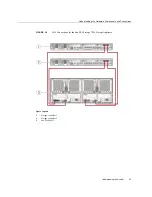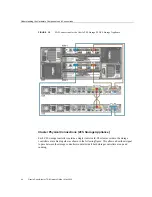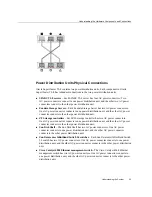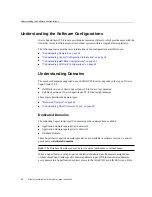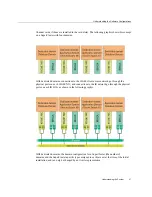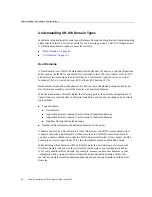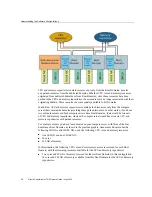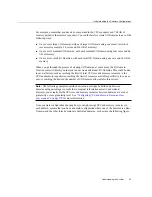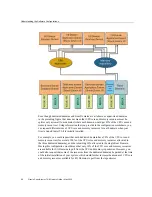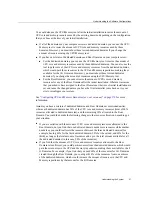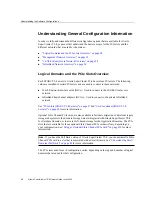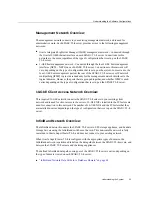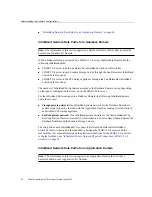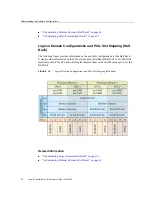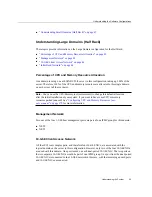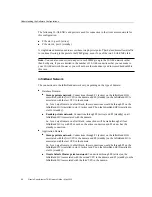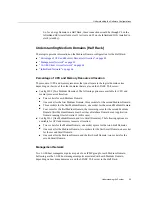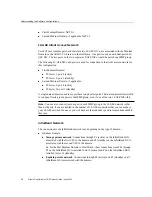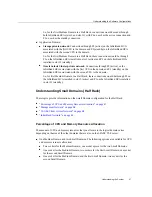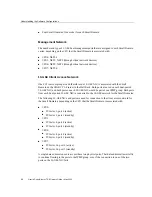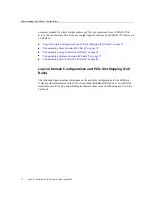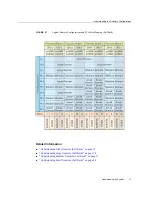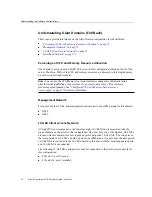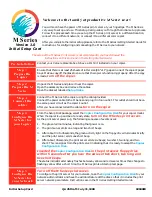
Understanding the Software Configurations
You could also use the CPU/Memory tool after the initial installation to resize the amount of
CPU core and memory resources used by the existing domains, depending on the configuration
that you chose at the time of your initial installation:
■
If all of the domains on your compute server are dedicated domains, you can use the CPU/
Memory tool to resize the amount of CPU core and memory resources used by those
domains. However, you must reboot those resized dedicated domains if you change the
amount of resources using the CPU/Memory tool.
■
If you have a mixture of dedicated domains and Root Domains on your compute server:
■
For the dedicated domains, you can use the CPU/Memory tool to resize the amount of
CPU core and memory resources used by those dedicated domains. You can also use the
tool to park some of the CPU core and memory resources from the dedicated domains,
which would park those resources in the CPU and Memory repositories, making them
available for the I/O Domains. However, you must reboot those resized dedicated
domains if you change the amount of resources using the CPU/Memory tool.
■
For the Root Domains, you cannot resize the amount of CPU core and memory
resources for any of the Root Domains after the initial installation. Whatever resources
that you asked to have assigned to the Root Domains at the time of initial installation are
set and cannot be changed unless you have the Oracle installer come back out to your
site to reconfigure your system.
“Configuring CPU and Memory Resources (
information.
Assume you have a mixture of dedicated domains and Root Domains as mentioned earlier,
where each dedicated domain has 30% of the CPU core and memory resources (total of 90%
resources allocated to dedicated domains), and the remaining 10% allocated to the Root
Domain. You could then make the following changes to the resource allocation, depending on
your situation:
■
If you are satisfied with the amount of CPU core and memory resources allocated to the
Root Domain, but you find that one dedicated domain needs more resources while another
needs less, you could reallocate the resources between the three dedicated domains (for
example, having 40% for the first dedicated domain, 30% for the second, and 20% for the
third), as long as the total amount of resources add up to the total amount available for all
the dedicated domains (in this case, 90% of the resources).
■
If you find that the amount of CPU core and memory resources allocated to the Root
Domain is insufficient, you could park resources from the dedicated domains, which would
park those resources in the CPU and Memory repositories, making them available for the I/
O Domains. For example, if you find that you need 20% of the resources for I/O Domains
created through the Root Domain, you could park 10% of the resources from one or more
of the dedicated domains, which would increase the amount of resources in the CPU and
Memory repositories by that amount for the I/O Domains.
Understanding the System
57
Содержание SuperCluster T5-8
Страница 1: ...Oracle SuperCluster T5 8 Owner s Guide Part No E40167 17 May 2016 ...
Страница 2: ......
Страница 11: ...Contents Index 353 11 ...
Страница 12: ...12 Oracle SuperCluster T5 8 Owner s Guide May 2016 ...
Страница 14: ...14 Oracle SuperCluster T5 8 Owner s Guide May 2016 ...
Страница 116: ...116 Oracle SuperCluster T5 8 Owner s Guide May 2016 ...
Страница 120: ...Find the Unpacking Instructions FIGURE 21 Unpacking the Rack 120 Oracle SuperCluster T5 8 Owner s Guide May 2016 ...
Страница 123: ...Move Oracle SuperCluster T5 8 Caution Never tip or rock the rack It can fall over Installing the System 123 ...
Страница 204: ...204 Oracle SuperCluster T5 8 Owner s Guide May 2016 ...
Страница 228: ...228 Oracle SuperCluster T5 8 Owner s Guide May 2016 ...
Страница 244: ...244 Oracle SuperCluster T5 8 Owner s Guide May 2016 ...
Страница 303: ...Understanding Expansion Rack Internal Cabling FIGURE 34 Expansion Rack Layout Half Rack Connecting Expansion Racks 303 ...

